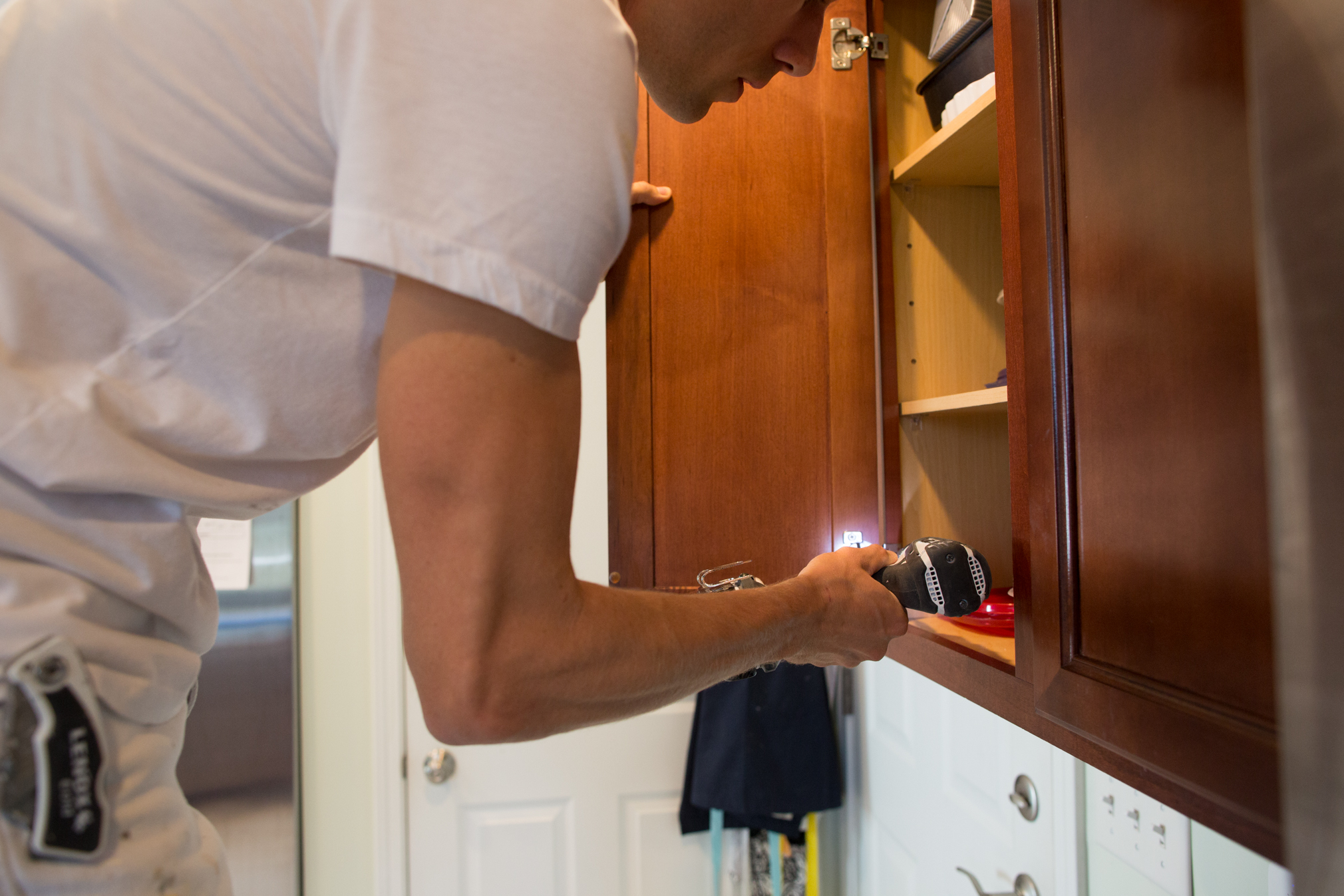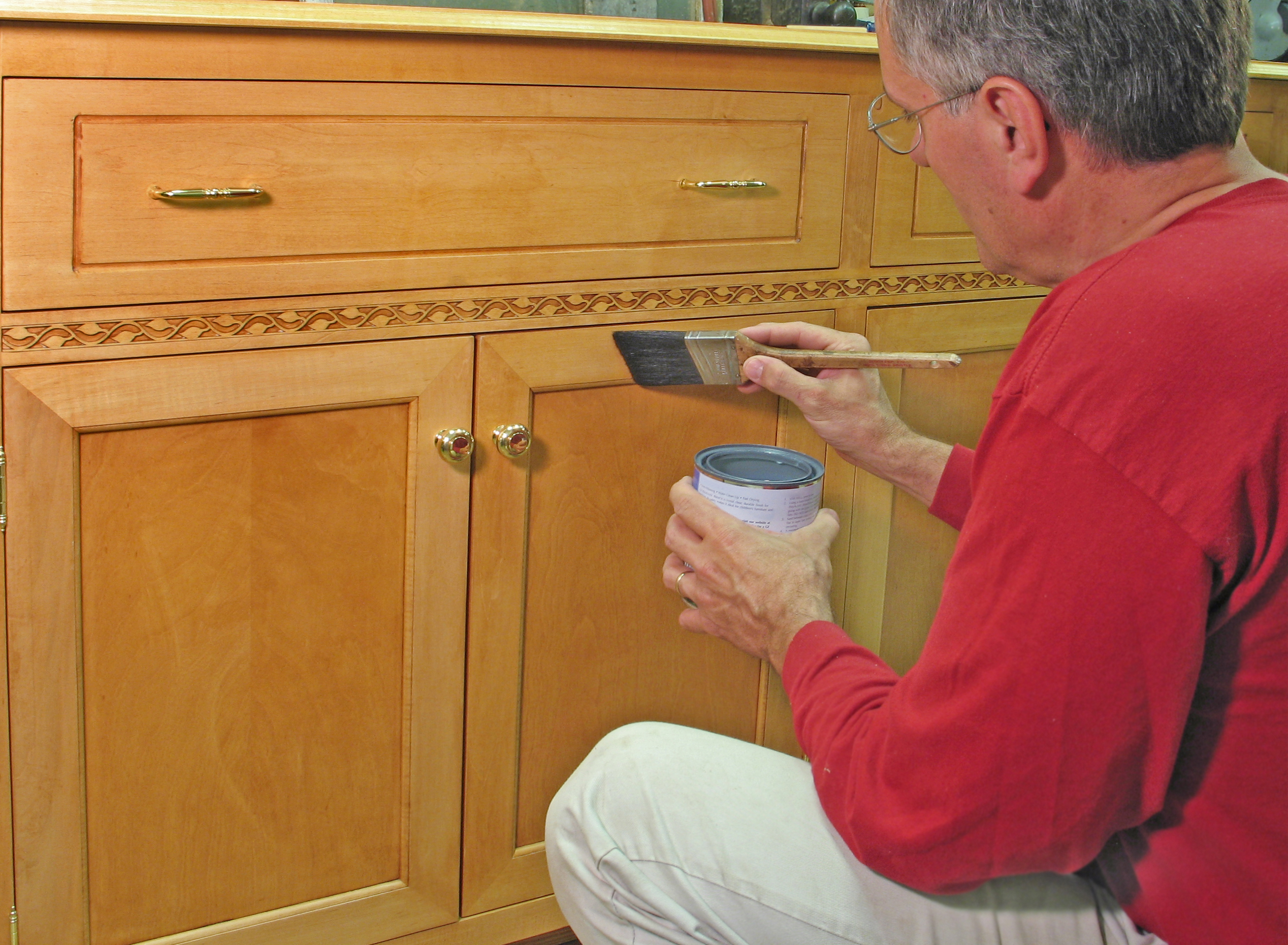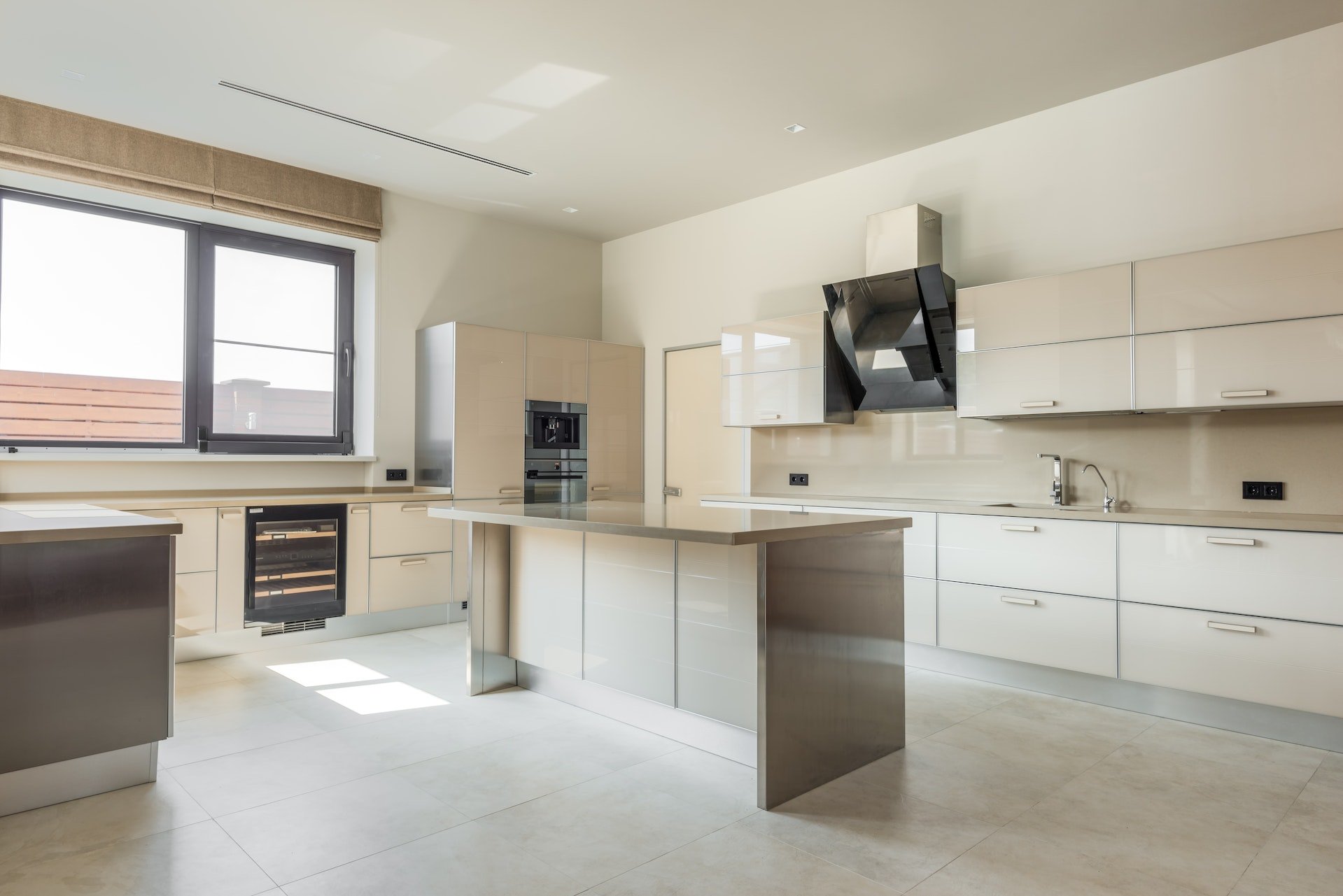Surface Preparation for a Smooth Finish

Achieving a flawlessly smooth finish on painted cabinets requires meticulous surface preparation. This crucial step ensures optimal paint adhesion and a professional-looking result. Overlooking this stage can lead to imperfections like brush strokes, uneven texture, and a less durable paint job. The process involves sanding, filling imperfections, and thorough cleaning.
Sanding Techniques for Cabinet Surfaces
Proper sanding is paramount for creating a smooth surface ready for paint. Different sanding techniques offer varying levels of control and efficiency, impacting the final finish. Hand sanding provides greater control, ideal for intricate details and smaller areas, while power sanding offers speed and efficiency for larger, flatter surfaces. However, power sanding requires more caution to avoid sanding too aggressively and creating unevenness.
Hand sanding uses sandpaper of various grits, progressing from coarser to finer grits to gradually smooth the surface. Begin with a coarser grit (e.g., 80-120 grit) to remove significant imperfections and gradually move to finer grits (e.g., 180-220 grit) for a smoother finish. Power sanding, using tools like orbital sanders or random orbital sanders, achieves similar results faster. However, it’s crucial to use the appropriate sanding pad and grit for the surface and avoid excessive pressure to prevent gouging or creating swirl marks. Always sand in the direction of the wood grain to maintain a consistent surface texture. For hard-to-reach areas, use sanding blocks or specialized sanding tools to maintain control.
Wood Filler Application for Cabinet Repair
Wood filler is essential for repairing dents, scratches, and other imperfections in cabinet surfaces. Proper application ensures a seamless blend with the existing surface, preventing noticeable blemishes after painting. The following table Artikels a step-by-step guide:
| Material | Tool | Procedure | Result |
|---|---|---|---|
| Wood filler (matching cabinet color) | Putty knife | Apply a small amount of wood filler to the imperfection, using the putty knife to press it firmly into the void, slightly overfilling the area. | Imperfection is filled |
| Putty knife | Damp cloth | Remove excess filler with the putty knife, ensuring the surface is level with the surrounding area. Wipe the knife clean with a damp cloth after each application. | Excess filler removed, surface is level. |
| Sandpaper (180-220 grit) | Sanding block | Once the filler is dry, lightly sand the area using a sanding block and fine-grit sandpaper, blending the filled area seamlessly with the surrounding surface. | Smooth transition between filler and existing surface. |
| Tack cloth | – | Remove any sanding dust with a tack cloth to prepare the surface for painting. | Clean surface ready for painting. |
Cleaning Cabinet Surfaces Before Painting
After sanding and filling, thorough cleaning is crucial to remove all dust and debris. This prevents imperfections from showing through the paint and ensures optimal paint adhesion. Use a tack cloth or a slightly damp cloth to wipe down the entire cabinet surface, paying attention to crevices and corners. Ensure the surface is completely dry before applying primer and paint. This final cleaning step guarantees a smooth, clean surface, ready for the final coat of paint.
Paint Application Techniques for Smoothness: How To Get Smooth Finish On Painted Cabinets

Achieving a flawlessly smooth finish on painted cabinets requires meticulous attention to detail throughout the painting process. Proper paint application techniques are crucial, complementing the thorough surface preparation already completed. The choice of tools and the method used significantly impact the final result, influencing both the visual appeal and the durability of the paint job.
How to get smooth finish on painted cabinets – High-quality primer is the foundation for a smooth, even finish. It provides a uniform surface for the topcoat, enhancing adhesion and preventing the underlying wood grain or imperfections from showing through. A good primer also helps to seal the wood, preventing the absorption of paint and ensuring a consistent color throughout. Applying primer involves using a high-quality brush or roller, working in thin, even coats to avoid drips and runs. Allow ample drying time between coats, following the manufacturer’s recommendations. Lightly sanding between coats with fine-grit sandpaper can further improve smoothness before applying the topcoat.
Primer Application and its Impact on Smoothness
A high-quality primer acts as a barrier between the cabinet’s surface and the topcoat paint. Its benefits include improved adhesion, blocking stains and imperfections, and creating a uniform surface for even paint distribution. This results in a smoother, more consistent finish with fewer visible imperfections. For application, use long, even strokes, working in the direction of the wood grain. Avoid overloading the brush or roller, as this can lead to drips and uneven coverage. Multiple thin coats are preferable to one thick coat, allowing each layer to dry completely before applying the next.
Comparison of Paint Application Methods
The choice of application method—brush, roller, or spray—significantly affects the final finish. Each method presents unique advantages and disadvantages.
The following comparison highlights the strengths and weaknesses of each method in achieving a smooth finish on cabinets:
- Brush:
- Pros: Precise control, ideal for detailed work, good for reaching corners and edges.
- Cons: Prone to brush strokes if not applied correctly, requires more time and effort, may leave a textured finish if not carefully blended.
- Roller:
- Pros: Fast coverage, suitable for large flat surfaces, can achieve a relatively smooth finish with proper technique.
- Cons: Less control than a brush, may leave roller marks if not used carefully, not ideal for intricate details.
- Spray:
- Pros: Extremely smooth finish, fast coverage, ideal for achieving a consistent color and texture.
- Cons: Requires specialized equipment, can be messy if not used properly, may require additional preparation to prevent overspray.
Visual Guide to Proper Brushstrokes
Imagine painting a cabinet door. The visual guide focuses on minimizing visible brush marks.
For optimal results, use a high-quality brush with soft bristles. Begin by applying paint in long, even strokes along the grain of the wood. Overlap each stroke slightly to ensure complete coverage and avoid leaving gaps. For vertical surfaces like cabinet frames, use a vertical stroke technique, starting at the top and working your way down in smooth, continuous motions. Avoid stopping and starting in the middle of a stroke, as this can lead to noticeable lap marks. For horizontal surfaces, apply paint in horizontal strokes. The final result should be a uniform, even coat with minimal visible brush marks, achieving a smooth, professional finish. The smooth, even application creates a professional look and prevents any streaking or uneven texture. The paint should appear consistent and even throughout, with no visible brushstrokes.
Refinishing and Troubleshooting for Imperfections

Achieving a perfectly smooth finish on painted cabinets requires attention to detail throughout the entire process, but even the most meticulous painter can encounter imperfections. Understanding how to address these issues is crucial for achieving a professional-looking result. This section Artikels common problems and provides practical solutions for rectifying them.
Addressing Common Painting Issues
Runs, drips, and uneven coverage are common painting problems, especially with high-gloss paints. Runs and drips typically occur when too much paint is applied at once or when the paint is too thin. Uneven coverage often results from insufficient coats or improper brushing techniques. Addressing these issues requires a combination of careful preparation and precise application techniques. For runs and drips, the best approach is immediate action. Before the paint dries completely, gently use a clean, dry brush to feather the excess paint back into the surrounding area, blending it seamlessly. If the paint has already begun to dry, carefully scrape off the excess using a sharp putty knife, taking care not to damage the surrounding surface. For uneven coverage, lightly sanding the affected area with fine-grit sandpaper and reapplying a thin coat of paint will typically resolve the issue. Always allow sufficient drying time between coats to prevent lifting or peeling.
Achieving a Flawless Finish on Cabinet Edges and Corners
Cabinet edges and corners are particularly prone to imperfections due to the difficulty of achieving even paint coverage in these areas. Build-up is a common problem, creating an uneven and unprofessional appearance. To prevent build-up, use a high-quality brush with fine bristles. Apply thin, even coats, allowing each coat to dry completely before applying the next. For sharp corners, use a small, angled brush to reach into the crevices and ensure full coverage. A technique called “back brushing” can be particularly helpful here. This involves brushing the paint *away* from the corner to prevent accumulation and create a smooth transition. For rounded edges, using a foam roller can help achieve a smooth, even finish without leaving brush marks. If imperfections still occur, light sanding with very fine grit sandpaper and reapplication of paint can be used to refine the finish.
Rewritten Article: How to Get a Smooth Finish on Painted Cabinets, How to get smooth finish on painted cabinets
Years of experience have taught me that achieving a truly flawless finish on painted cabinets is less about fancy techniques and more about meticulous preparation and careful execution. Forget the complicated jargon; it’s all about understanding the fundamentals. Start by ensuring your cabinets are properly cleaned and sanded. A smooth, even surface is paramount. Don’t rush the preparation; this step is the foundation of your success. Next, choose the right paint. High-quality paint is worth the investment. It will flow better, resulting in a smoother finish with fewer imperfections. Apply thin, even coats, allowing ample drying time between each. Don’t overload your brush or roller; less is more. For edges and corners, employ the “back brushing” technique to prevent build-up. If minor imperfections occur, a light sanding with ultra-fine sandpaper followed by a touch-up coat will often solve the problem. Patience and attention to detail are your greatest allies in this process. Remember, a smooth finish is a reflection of your commitment to quality. Take your time, and you’ll be rewarded with stunning results.
